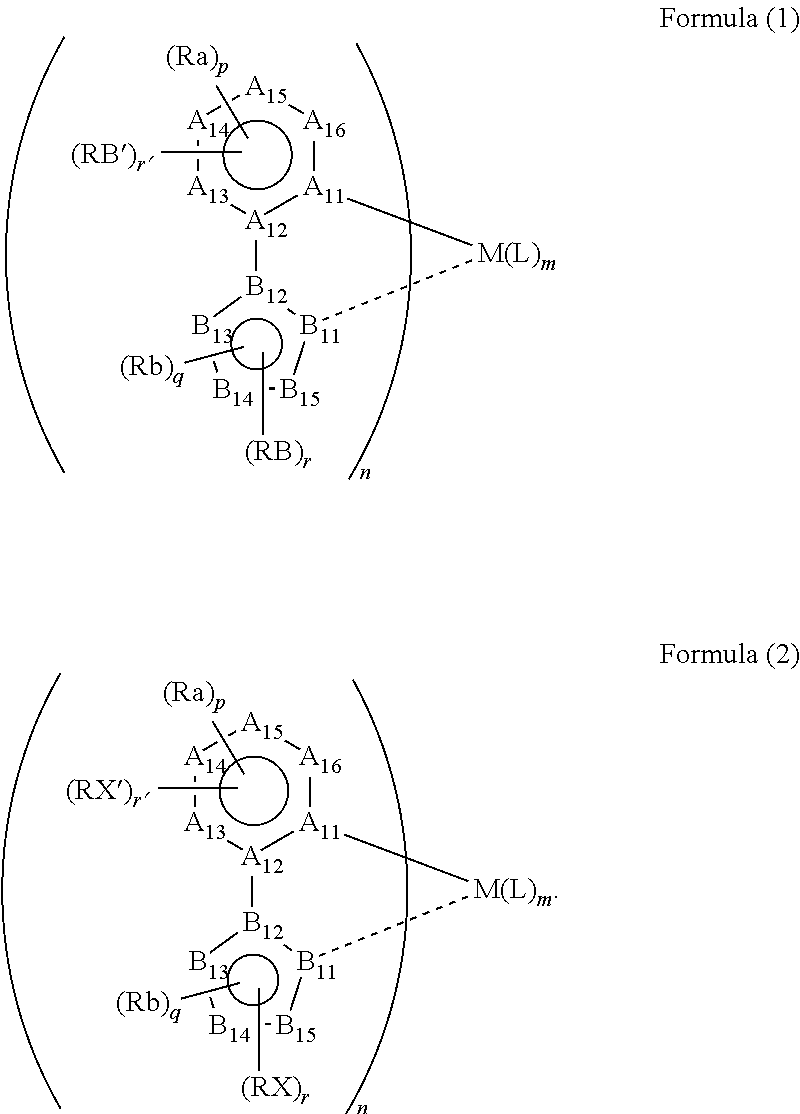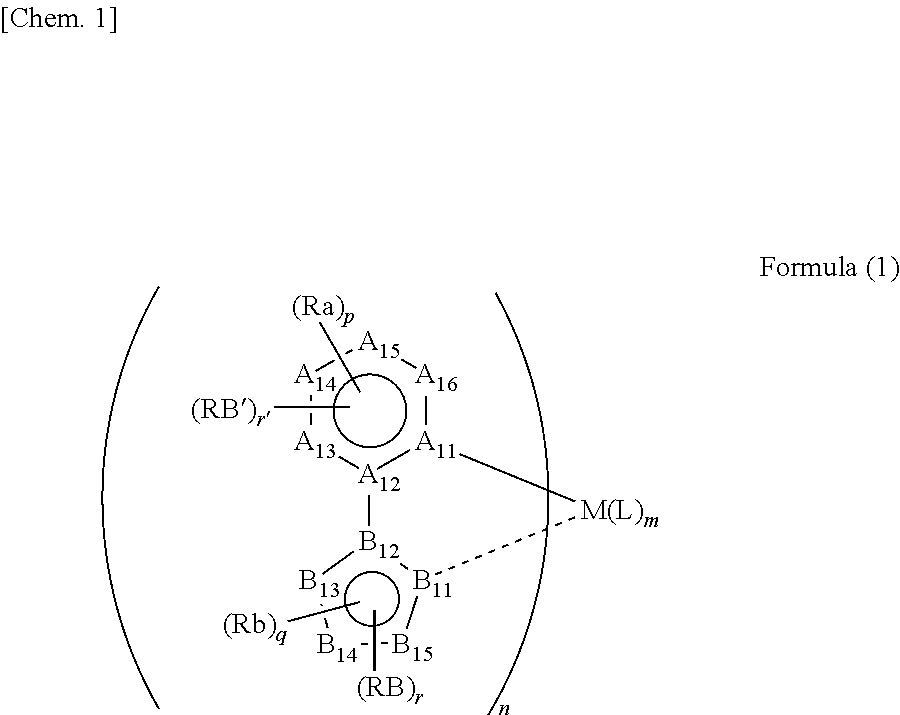Method for synthesizing organic metal complex and organic electroluminescent element using compound synthesized by said synthesis method
a technology organic metal complexes, which is applied in the direction of organic chemistry, platinum organic compounds, indium organic compounds, etc., can solve the problems of reducing emission efficiency, affecting the production efficiency of organic electroluminescent elements, and practically inacceptable techniques, so as to shorten the emission wavelength of a complex, shorten the emission wavelength of a dopant, and improve the effect of emission efficiency
- Summary
- Abstract
- Description
- Claims
- Application Information
AI Technical Summary
Benefits of technology
Problems solved by technology
Method used
Image
Examples
example 1
>
[0105](1) Synthesis of Exemplary Compound 1-10
[0106]Exemplary compound 1-10 was synthesized from exemplary compound 2-7 through the following procedure.
[0107]Exemplary compound 2-7 (1.21 g, 1.0 mmol), zinc cyanide (0.47 g, 4.0 mmol), bis(dibenzylideneacetone)palladium (Pd(dba)) (29 mg, 0.048 mmol), and tri-t-butylphosphine (30 mg, 0.15 mmol) were agitated in N,N-dimethylformamide (DMF) (30 mL) while being heated at 90° C. for four hours. The reaction mixture was left to cool, and insoluble matter was then separated through filtration. Water was added to the filtrate, and the mixture was subjected to extraction with ethyl acetate. The organic phase was repeatedly washed with water and dried over anhydrous magnesium sulfate. The solvent was removed through evaporation under reduced pressure, and the resultant concentrate was purified by silica gel column chromatography. An eluate containing the target product was concentrated under reduced pressure, and the concentrate was suspended ...
example 2
[0150]Indium tin oxide (ITO) was formed into a thickness of 150 nm on a glass substrate (50 mm by 50 mm, thickness: 0.7 mm), and then patterned into an anode. Subsequently, the transparent substrate having the ITO transparent electrode was ultrasonically washed with isopropyl alcohol, dried with dry nitrogen gas, and cleaned with UV ozone for five minutes. The transparent substrate was then fixed onto a substrate holder of a commercially available vacuum deposition system.
[0151]Poly(3,4-ethylenedioxythiophene)-poly(styrene sulfonate) (PEDOT / PSS, Baytron P A1 4083, manufactured by Bayer) was diluted with pure water to prepare a solution. The solution was applied to the transparent substrate through slit coating and then dried at 140° C. for one hour, to form a hole injecting layer having a thickness of 50 nm.
[0152]Materials for layers were placed in vapor deposition crucibles in the vacuum deposition system in amounts suitable for preparation of an organic EL element. The crucibles w...
PUM
| Property | Measurement | Unit |
|---|---|---|
| thickness | aaaaa | aaaaa |
| temperature | aaaaa | aaaaa |
| temperature | aaaaa | aaaaa |
Abstract
Description
Claims
Application Information
 Login to View More
Login to View More - R&D
- Intellectual Property
- Life Sciences
- Materials
- Tech Scout
- Unparalleled Data Quality
- Higher Quality Content
- 60% Fewer Hallucinations
Browse by: Latest US Patents, China's latest patents, Technical Efficacy Thesaurus, Application Domain, Technology Topic, Popular Technical Reports.
© 2025 PatSnap. All rights reserved.Legal|Privacy policy|Modern Slavery Act Transparency Statement|Sitemap|About US| Contact US: help@patsnap.com



